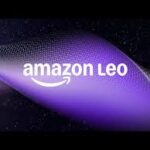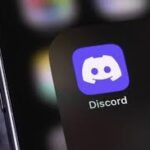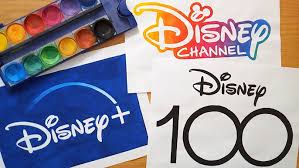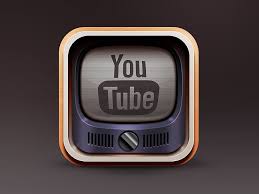In a dramatic resolution that ended a tense fifteen-day blackout, The Walt Disney Company and YouTube TV reached a multi-year distribution agreement on November 14, 2025, restoring critical channels like ABC and ESPN to the streaming platform just in time for weekend college football matchups. This agreement concluded the longest blackout in Disney’s history, which had left approximately 8-10 million YouTube TV subscribers without access to prime sporting events, election coverage, and popular entertainment programming since October 30 .
The resolution of this high-stakes negotiation represents more than just the return of familiar channels—it signals a significant evolution in how content will be distributed and consumed in the rapidly changing television landscape. This article examines the underlying causes of the dispute, the key components of the new agreement, and what these developments mean for the future of streaming and the consumers who navigate this complex ecosystem.
The Blackout Crisis: What Was at Stake?
Channels Lost and Immediate Impact
When negotiations collapsed on October 30, 2025, YouTube TV subscribers suddenly lost access to more than twenty Disney-owned channels . The blackout impacted:
- ESPN networks: Including ESPN, ESPN2, SEC Network, and ACC Network, affecting access to Monday Night Football and college football games
- Broadcast television: Local ABC affiliates, removing access to live news, election coverage, and primetime programming
- Entertainment channels: FX, National Geographic, Freeform, and all Disney-branded channels
The timing proved particularly disruptive for viewers, coinciding with crucial college football matchups, professional sports games, and 2025 election night coverage . For many subscribers, these live events represented the primary reason they subscribed to YouTube TV in the first place.
Consumer Response and Market Pressure
As the blackout extended through its first week, subscriber frustration mounted. One survey indicated that 24% of YouTube TV’s subscribers had either canceled or planned to cancel their subscriptions if the dispute wasn’t resolved . While YouTube representatives claimed actual churn was “manageable” and didn’t align with these survey findings, the potential for significant subscriber loss likely accelerated negotiations .
The situation demonstrated the fragility of the streaming television ecosystem and the powerful leverage that exclusive live content—particularly sports—now commands in the media marketplace. For YouTube TV, which has positioned itself as a comprehensive cable replacement, losing Disney’s portfolio represented an existential threat to its value proposition.
The Negotiation Stalemate: Behind the Impasse
The Financial Standoff
At the heart of the dispute was a fundamental disagreement over the value of Disney’s content and what constituted a “fair rate” for carriage. Disney maintained that YouTube TV was refusing to pay appropriate fees for its channels, noting that ESPN alone commands more than $10 per month per subscriber—the highest carriage fee of any U.S. network . From Disney’s perspective, YouTube TV was benefiting from the draw of their valuable content without offering appropriate compensation.
YouTube TV, meanwhile, publicly claimed that Disney was proposing unsustainably costly terms that would inevitably lead to higher prices for consumers and fewer choices for subscribers . The platform positioned itself as a consumer advocate fighting to preserve affordability and flexibility—a strategic framing likely designed to direct subscriber frustration toward Disney.
Competing Public Narratives
As with modern carriage disputes, both parties engaged in public relations campaigns to shape consumer perception:
- Disney accused Google of “using its market dominance to eliminate competition” and claimed YouTube TV had pulled content “prior to the midnight expiration” of their previous deal
- YouTube TV suggested Disney had strategic reasons for prolonging the blackout, noting that it could benefit Disney’s own streaming products like Hulu + Live TV and Fubo
A particularly revealing moment in the public standoff came when Disney requested that YouTube TV restore ABC programming specifically for Election Day coverage “to put the public interest first” . YouTube TV declined this temporary restoration, arguing it would confuse customers, and instead counter-proposed that Disney restore both ABC and ESPN while negotiations continued .
The “Ingestion” Controversy
Beyond the public financial dispute, a more technical but equally significant sticking point emerged around the concept of “ingestion”—the ability for YouTube TV to distribute Disney’s streaming content within its own platform rather than requiring subscribers to switch to dedicated Disney apps .
According to reports, Disney initially resisted this level of integration, as it would mean ceding control over user data and viewing experiences to YouTube—potentially undermining Disney’s own direct-to-consumer business model over the long term . The compromise reached on this issue represents one of the most innovative aspects of the final agreement.
The Resolution: Key Components of the New Agreement
The multi-year distribution agreement, announced on November 14, 2025, contains several groundbreaking elements that likely provide a template for future carriage deals between streaming services and content providers.
Table: Key Components of the Disney-YouTube TV Agreement
Strategic Benefits for Both Parties
The agreement represents a carefully balanced compromise that delivers significant strategic advantages to both companies:
For Disney:
- Secures ongoing carriage revenue from YouTube TV’s substantial subscriber base
- Protects the value proposition of their linear networks while strategically integrating their direct-to-consumer streaming products
- Gains distribution for their flagship ESPN Unlimited service to potentially millions of new households
- Maintains some control over how their content is ingested and distributed within the YouTube TV ecosystem
For YouTube TV:
- Preserves core content that subscribers fundamentally expect from a live TV service
- Gains future flexibility through packaging options that could help manage costs long-term
- Enhances value through included streaming services without immediate price increases
- Demonstrates resilience in negotiations with major content providers, potentially setting favorable precedents for future carriage discussions
The Broader Implications: Reshaping the Television Landscape
The New Template for Carriage Agreements
The Disney-YouTube TV agreement establishes what will likely become a new industry standard for streaming carriage deals, particularly in its integration of direct-to-consumer streaming products within traditional linear distribution. Similar to YouTube TV’s recent agreement with NBCUniversal that made some Peacock content available, this hybrid approach acknowledges the convergence of linear and streaming models .
The compromise on “ingestion” suggests a pragmatic middle ground emerging between content creators who want to maintain direct consumer relationships and distributors who seek to provide seamless viewing experiences. This balance will likely inform future negotiations between other streaming services and content providers.
Despite YouTube TV’s public stance on preserving affordability, industry observers recognize that the increased carriage costs associated with this agreement will inevitably lead to future price hikes for subscribers. YouTube TV’s base plan already costs $82.99 per month, and the service offered subscribers a $20 credit during the blackout period—an acknowledgment of the disruption’s impact on perceived value .
History has consistently demonstrated that increased carriage fees ultimately translate to higher subscriber costs across the streaming and cable industries. The question is not if YouTube TV’s price will increase, but when and by how much.
The Ascendancy of Sports Rights
This dispute further underscores the enormous value of live sports in the media landscape. ESPN’s position as the most expensive cable network at over $10 per subscriber per month reflects the premium consumers place on live sporting events . As one of the last forms of truly “appointment television,” sports programming continues to command disproportionate economic value in an otherwise fragmented media world.
The agreement ensures that YouTube TV retains access to this critical category, without which its value proposition as a comprehensive live TV service would be fundamentally compromised.
Guidance for Consumers in the New Streaming Era
Evaluating Your Options
For consumers, the resolution of the blackout provides an opportunity to reassess their television subscriptions in light of the evolving streaming landscape:
- Current YouTube TV subscribers can breathe a sigh of relief while preparing for likely future price increases. The service remains one of the most comprehensive live TV streaming options, particularly for sports fans.
- Those who switched services during the blackout may want to evaluate whether to return, considering the restored content alongside any differences they’ve discovered in alternative services.
- Cord-cutters evaluating options should note that the distinction between “streaming” and “cable” continues to blur, with YouTube TV increasingly resembling traditional cable packages in both content and cost.
Understanding the New Value Proposition
The inclusion of ESPN Unlimited and potential access to Disney’s streaming bundle represents an enhancement of YouTube TV’s value proposition, at least in the short term. Subscribers should:
- Explore the integrated ESPN Unlimited content within the YouTube TV app to fully utilize this new benefit
- Evaluate whether the Disney+/Hulu bundle offerings provide cost savings compared to separate subscriptions
- Monitor for upcoming packaging options that might allow for more customized channel lineups at different price points
The Future of Television Distribution
The Disney-YouTube TV agreement, while resolving an immediate crisis, also points toward several enduring trends that will continue to shape television distribution:
Continued Industry Consolidation and Bundling
The integration of Disney’s streaming products within YouTube TV’s offering is part of a broader trend toward re-bundling in the streaming industry. After years of fragmentation through à la carte services, consumers are increasingly seeking simplified bundles that combine multiple services—either through aggregators like YouTube TV or through direct partnerships between content providers.
Persistent Carriage Disputes
Despite this resolution, the underlying economic tensions that drive carriage disputes remain unchanged. YouTube TV has faced similar challenges with other content providers throughout 2025, including near-blackouts with NBCUniversal in October and Fox in August . These recurring conflicts suggest that consumers should expect similar disruptions in the future as the economic models continue to evolve.
The Inevitable Direct-to-Consumer Transition
While this agreement preserves the traditional carriage model in the short term, Disney’s continued development of ESPN Unlimited as a standalone service ($29.99/month) signals the long-term industry shift toward direct-to-consumer relationships . The current hybrid approach represents a transitional phase that balances legacy distribution with emerging consumer preferences.
Conclusion: A Temporary Truce in an Ongoing Revolution
The resolution of the Disney-YouTube TV blackout represents a significant milestone in the evolution of television distribution, but not a final destination. The fifteen-day disruption and its innovative solution highlight the continuing turbulence as traditional media companies, tech platforms, and consumers navigate the shift from legacy cable to streaming-dominated futures.
For now, subscribers have regained access to their favorite channels and recorded content, with the added value of integrated streaming services. Both companies have achieved their immediate objectives—Disney securing fair compensation for its valuable content, and YouTube TV preserving its comprehensive offering while gaining future flexibility.
However, the fundamental dynamics that created this conflict remain firmly in place: rising content costs, the unparalleled value of live sports, competing direct-to-consumer strategies, and consumer resistance to perpetual price increases. The television distribution revolution continues, with this agreement representing just one battle in a much longer war.
As the media landscape continues its rapid transformation, one certainty emerges: the relationship between content creators, distributors, and consumers will continue to evolve in increasingly complex ways. The Disney-YouTube TV agreement provides both a temporary stability and a glimpse into the future of how we will discover, access, and pay for the content we love.
- Amazon Leo: Amazon’s Satellite Internet Rebrand Signals

- Disney and YouTube TV Reach Landmark Deal: What the End of the Blackout Means for the Future of Streaming

- Discord’s Family Center Adds Purchase Monitoring: What Parents Need to Know

- How Pinterest’s Bet on Open-Source AI is Paying Off With “Tremendous Performance”

- Google Chrome Silences Pesky Notifications with Smarter Default Settings



